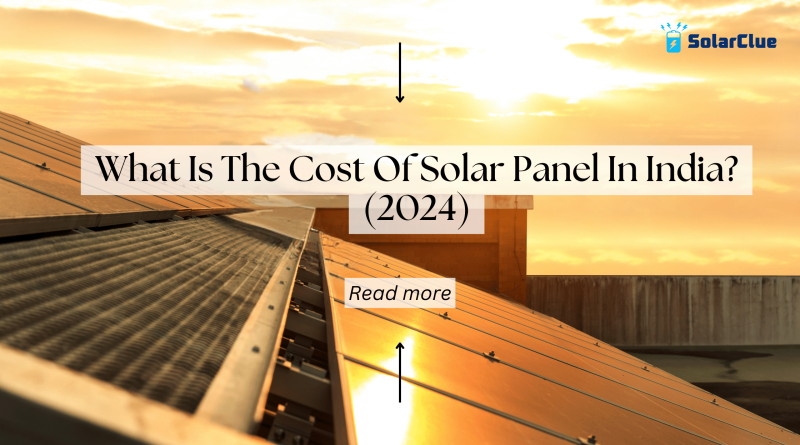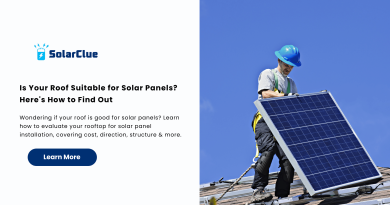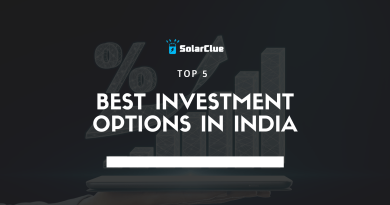What Is The Cost Of Solar Panel In India? (2024)
Investing in solar panels is a significant step towards sustainable energy and long-term savings. This guide provides a detailed analysis of the cost of solar panels in India for 2024, factors influencing prices, government incentives, and tips for getting the best value.
Table of Contents
Breaking Down the Cost of a Solar Panel System in India
Components of a Solar Panel System
1. Solar Panels: The primary component, available in various types and efficiencies.
2. Inverter: Converts DC electricity generated by panels to AC electricity.
3. Mounting Structure: Supports and secures the panels.
4. Wiring and Electrical Components: Connects and integrates the system.
5. Battery Storage (Optional): Stores excess energy for later use.
6. Installation Costs: Labor and expertise required for setup.
Average Costs
- Monocrystalline Panels: ₹25 – ₹35 per watt
- Polycrystalline Panels: ₹20 – ₹30 per watt
- Thin-Film Panels: ₹15 – ₹25 per watt
- Inverter Costs: ₹7,000 – ₹10,000 per kW
- Mounting Structure Costs: ₹1,000 – ₹2,000 per kW
- Installation Costs: ₹5,000 – ₹10,000 per kW
Impact of Government Subsidies and Schemes on Solar Panel Prices
Key Subsidies and Incentives
1. Central Government Subsidy: Up to 30% for residential installations.
2. State Government Subsidies: Vary by state; some offer additional incentives.
3. Net Metering: Allows consumers to sell excess electricity back to the grid.
4. Tax Benefits: Deductions on income tax for investments in solar energy.
How Subsidies Affect Prices
Subsidies significantly reduce the upfront cost, making solar panels more affordable for residential and commercial users. The exact amount saved depends on the specific subsidy schemes available in your state.
Comparing Costs of Different Solar Panel Technologies
| Solar Panel Type | Efficiency Range | Cost per Watt (₹) | Typical Applications |
|---|---|---|---|
| Monocrystalline | 15-22% | 25 – 35 | Residential and commercial |
| Polycrystalline | 13-18% | 20 – 30 | Large-scale installations |
| Thin-Film | 10-12% | 15 – 25 | Flexible applications, low-light areas |
Financing Options for Solar Panel Purchases in India
Loans and EMIs
1. Bank Loans: Many banks offer loans specifically for solar installations with competitive interest rates.
2. EMI Options: Solar companies often provide easy monthly installment plans.
Leasing and Power Purchase Agreements (PPAs)
1. Leasing: Pay a fixed monthly fee to use the solar panels without owning them.
2. PPAs: Pay for the electricity generated at a predetermined rate, usually lower than grid rates.
Estimating Payback Period and Return on Investment
Calculating Payback Period
- Initial Investment: Total cost of the solar panel system (after subsidies).
- Annual Savings: Reduction in electricity bills.
- Payback Period: Initial Investment / Annual Savings.
Example Calculation
- Initial Investment: ₹1,00,000
- Annual Savings: ₹15,000
- Payback Period: ₹1,00,000 / ₹15,000 = ~6.67 years
Return on Investment (ROI)
ROI = (Net Profit / Cost of Investment) * 100
Tips for Getting the Best Price on Solar Panels in India
1. Compare Quotes: Get quotes from multiple suppliers and installers.
2. Check for Subsidies: Ensure you are availing all available government subsidies and incentives.
3. Choose the Right Technology: Select the most efficient and cost-effective panel type for your needs.
4. Consider Long-Term Savings: Higher efficiency panels may have a higher upfront cost but offer greater savings over time.
Cost Trends in the Indian Solar Market and Future Projections
Current Trends
- Decreasing Panel Costs: Advances in technology and increased production have led to lower prices.
- Rising Efficiency: Newer panels offer higher efficiency at lower costs.
Future Projections
- Continued Price Drops: Expected as technology improves and economies of scale are achieved.
- Increased Adoption: More residential and commercial users are expected to switch to solar power.
Solar Panel Prices from SolarClue (2024)
| Solar Panel Type | Wattage (W) | Price (₹) per Panel |
|---|---|---|
| Monocrystalline 300W | 300 | ₹9,000 – ₹10,500 |
| Monocrystalline 350W | 350 | ₹10,500 – ₹12,250 |
| Polycrystalline 250W | 250 | ₹5,000 – ₹6,250 |
| Polycrystalline 300W | 300 | ₹6,000 – ₹7,500 |
| Thin-Film 100W | 100 | ₹1,500 – ₹2,500 |
| Thin-Film 150W | 150 | ₹2,250 – ₹3,750 |
Conclusion
Understanding the cost of solar panels in India involves considering the price of the panels, installation costs, and available subsidies. By comparing different panel types, exploring financing options, and keeping up with market trends, you can make an informed decision that maximizes your investment in solar energy.
Here at SolarClue®, we offer a smart, practical, and “beautiful” solution. You will be answered for all the questions related to Solar.
We provide all kinds of brands that are the Best Solar panels in India.
If you are the one who is planning for the solar power system. Don’t hesitate to contact our team!
Looking forward to empowering you with solar energy, just like hundreds of our other clients!
FAQs
1. What factors affect the cost of solar panels in India?
Panel type, wattage, brand, and installation costs are key factors.
2. How can I reduce the cost of installing solar panels?
Avail government subsidies, compare quotes, and choose the right panel type for your needs.
3. What are the benefits of government subsidies for solar panels?
Subsidies significantly reduce the upfront cost, making solar panels more affordable.
4. Are there financing options available for solar panel purchases in India?
Yes, various loans, EMI options, leasing, and PPAs are available.
5. How do I calculate the payback period for my solar panel system?
Divide the initial investment by the annual savings on your electricity bills.



